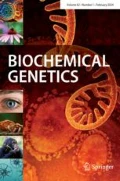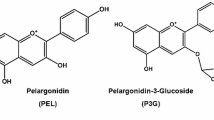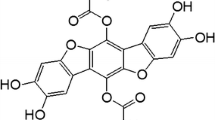Abstract
The aim of this study to investigate the potential effects of essential oils and compounds obtained from MC fruit on sepsis induced endothelial cell damage in human umbilical cord vein endothelial cells (HUVECs) at molecular and cellular levels on in vitro sepsis model. A sepsis model was induced by the application of LPS. The HUVEC treatment groups were as follows: control, LPS, MC, MC plus LPS, 1.8 cineole, 1.8 cineole plus LPS, α-pinene, α-pinene plus LPS, α-terpineol, and α-terpineol plus LPS. Following the treatments, cell proliferation was analyzed using the xCELLigence® system. The mRNA expression of various cytokines [tumor necrosis factor (TNF-α), interleukin-1β (IL-1β), and IL-6] and endothelial nitric oxide (eNOS) were determined by quantitative polymerase chain reaction (qPCR) analysis. The 1.8 cineole and α-pinene treatments at specific doses showed toxic effects on α-terpineine, although it did not result in a change in the cellular index as compared with that of the control group. The application of LPS to HUVECs led to a significant decrease in the cellular index, depending on the treatment time. It did not correct the decreased cell index of MC plus LPS and α-terpineol plus LPS groups as compared with that of the LPS-only group. The 1.8 cineole plus LPS treatment and α-pinene plus LPS treatment significantly increased the cell index as compared with that of the LPS-only treatment, and the cell index in these groups was closer to that of the control. According to the results of the qPCR analysis, neither the MC-only treatment nor the α-terpineol-only treatment significantly reduced cellular damage caused by LPS-induced increases in TNF-α, IL-1β, IL-6, and eNOS mRNA expression. However, both the 1.8 cineole treatment and α-pinene treatments significantly decreased TNF-α, IL-1β, IL-6, and eNOS mRNA expression induced by LPS. Volatile oil obtained from MC fruit and the MC compound α-terpineol had no effect on the decreased cell index and increased cytokine response due to LPS-induced endothelial cell damage. However, 1.8 cineole and α-pinene, other major components of MC fruit, ameliorated LPS-induced damage in HUVECs at cellular and biomolecular levels (TNF-α, IL-1β, IL-6, and eNOS).









Similar content being viewed by others
References
Abe S, Maruyama N, Hayama K, Ishibashi H, Inoue S, Oshima HHY (2003) Suppression of tumor necrosis factor-alphainduced neutrophil adherence responses by essential oils. Mediators Inflamm 12:323–328
Adriana GG, Jullyana SS, Quintans LJ (2013) Monoterpenes with analgesic activity—a systematic review. Phytother Res 27:1–15
Akin M, Aktumsek A, Nostro A (2010) Antibacterial activity and composition of the essential oils of Eucalyptus camaldulensis Dehn. and Myrtus communis L. growing in Northern Cyprus. Afr J Biotechnol 9:531–535
Aladağ MA, Türköx Y, Özerol İH (2000) Nitrik oksit ve nörofizyopatolojik etkileri Turkiye Klinikleri. J Med Sci 20:107–111
Alberti C, Brun-Buisson C, Burchardi H, Martin C, Goodman S, Artigas A (2002) Epidemiology of sepsis and infection in ICU patients from an International Multicenter Cohort Study. Intensive Care Med 28:108–121
Aleksic V, Knezevic P (2014) Antimicrobial and antioxidative activity of extracts and essential oils of Myrtus communis L. Microbiol Res 169:240–254
Alipour G, Dashti S, Hosseinzadeh H (2014) Review of pharmacological effects of Myrtus communis L. and its active constituents. Phytother Res PTR 28:1125–1136. https://doi.org/10.1002/ptr.5122
Ana CRS, Paula ML, Mariana MBA, Danielle CMC, Celuta SA, Daniela SA (2012) Biological activities of α-pinene and β-pinene enantiomers. Molecules 17:6305–6316
Angus DC, Linde-Zwirble WT, Lidicker J, Clermont G, Carcillo J, Pinsky MR (2001) Epidemiology of severe sepsis in the United States: analysis of incidence, outcome, and associated costs of care. Crit Care Med 29:1303–1310
Asgarpanah J, Ariamnesh A (2015) Phytochemistry and pharmacological properties of Mytrus communis L. Indian J Tradit Knowl 1(1):82–87
Ayaz G, Halici Z, Albayrak A, Karakus E, Cadirci E (2017) Evaluation of 5-HT7 receptor trafficking on ın vivo and ın vitro model of lipopolysaccharide (LPS)-ınduced ınflammatory cell ınjury in rats and LPS-treated A549 cells. Biochem Genet 55:34–47. https://doi.org/10.1007/s10528-016-9769-2
Aydin E, Türkez H, Geyikoğlu F (2013) Antioxidative, anticancer and genotoxic properties of α-pinene on N2a neuroblastoma cells. Sect Cell Mol Biol 65(3):1009–2013
Baeuerle PA (1998) Pro-inflammatory signaling: last pieces in the NF-κB puzzle? Curr Biol 8:19–22
Barreto RSS, Albuquerque-Júnior RLC, Araújo AAS, Jackson RGS (2014) A systematic review of the wound-healing effects of monoterpenes and ıridoid derivatives. Molecules 19:846–862
Belmimoun A, Meddah B, Meddah AT, Sonnet P (2016) Antibacterial and antioxidant activities of the essential oils and phenolic extracts of Myrtus communis and Zygophy'um album from Algeria. J Fundam Appl Sci 8(2):510–514
Bone RC (1991) Sepsis syndrome. New insights into its pathogenesis and treatment. Infect Dis Clin N Am 5(4):793–805
Bouzabata A, Casanova J, Bighelli A, Cavaleiro C, Salgueiro L, Tomi F (2016) The genus Myrtus L. in Algeria: composition and biological aspects of essential oils from M. communis and M. nivellei: a review. Chem Biodivers 13:672–680. https://doi.org/10.1002/cbdv.201500342
Chikkamenahalli LL et al (2016) Escherichia coli Braun Lipoprotein (BLP) exhibits endotoxemia—like pathology in Swiss albino mice. Sci Rep 6:34666. https://doi.org/10.1038/srep34666
Cho KH (2012) 1,8-cineole protected human lipoproteins from modification by oxidation and glycation and exhibited serum lipid-lowering and anti-inflammatory activity in zebrafish. BMB Rep 45(10):565–570
Cuschieri J et al (2010) Early elevation in random plasma IL-6 after severe injury is associated with development of organ failure. Shock 34:346–351
Hart P, Brand C, Carson C, Riley T, Prager R, Finlay-Jones J (2000) Terpinen-4-ol, the main component of the essential oil of Melaleuca alternifolia (tea tree oil), suppresses inflammatory mediator production by activated human monocytes. Inflamm Res 49:619–626
Hennia A, Brada M, Nemmiche S, Fauconnier ML, Lognay G (2015) Chemical composition and antibacterial activitiy of the essential oils of Algerian Myrtus communis L. J Essent Oil Res 27(4):324–328
Jiao X et al (2014) Acute and subacute toxicity study of 1,8-cineole in mice. Int J Clin Exp Pathol 7(4):1495–1501
Juergens UR (2014) Anti-infl ammatory properties of the monoterpene 1.8-cineole: current evidence for co-medication in ınflammatory airway diseases. Drug Res 64:638–646
Kafkas E, Sadighazadi S, Yıldırım H, Kefayati S (2013) Volatile compounds of selected white and black myrtle (Myrtus communis L.) types from Mediterranean region of Turkey. J Med Plants Res 7:1244–1248
Lee J, Bae EH, Ma SK, Kim SW (2016) Altered nitric oxide system in cardiovascular and renal diseases. Chonnam Med J 52:81–91
Lepoivre M, Fieschi F, Coves J, Thelander L, Fontecave M (1991) Inactivation of ribonucleotide reductase by nitric oxide. Biochem Biophys Res Commun 179:442–448
Liu J, Wang J, Luo H, Li Z, Zhong T, Tang J (2017) Screening cytokine/chemokine profiles in serum and organs from an endotoxic shock mouse model by LiquiChip. Life Sci China 60:1242–1250
Madhav B, Shabbir M (2004) Role of inflammatory mediators in the pathophysiology of acute respiratory distress syndrome. J Pathol 202(2):145–156
Nogueira MNM, Aquino SG, Junior CR, Spolidorio DMP (2014) Terpinen-4-ol and alpha-terpineol (tea tree oil components) inhibit the production of IL-1β, IL-6 and IL-10 on human macrophages. Inflamm Res 63:769–778
Özcan C, Hasanoğlu A, Gülcüler M (1996) Sepsis ve inflamasyon mediatörleri. Turgut Özal Tıp Merkezi Dergisi 3:4
Ozdulger A et al (2003) The protective effect of N-acetylcysteine on apoptotic lung injury in cecal ligation and puncture-induced sepsis model. Shock 19:366–372
Özkan C, Akgül Y (2010) Deneysel Nefrotoksisite Oluşturulan Tavşanlarda Nitrik Oksit Donörü (L-Arginin) ve Nitrik Oksit Sentaz İnhibitörlerinin (Aminoguanidin, L-NAME) Bazı Biyokimyasal Parametrelere Etkileri. Yüzüncü Yıl Üniversitesi Veteriner Fakültesi Dergisi 21:35–41
Panacek EA et al (2004) Efficacy and safety of the monoclonal anti-tumor necrosis factor antibody F(ab′)2 fragment afelimomab in patients with severe sepsis and elevated interleukin-6 levels. Crit Care Med 32:2173–2182
Parvardeh S, Moghimi M, Eslami P, Masoudi A (2016) alpha-Terpineol attenuates morphine-induced physical dependence and tolerance in mice: role of nitric oxide. Iran J Basic Med Sci 19:201–208
Randeep SJ, Sergio A, Kristin H, Heinz B, Mahmoud K (2011) Interleukin-6 in surgery, trauma, and critical care part II: clinical implications. J İntensive Care Med 26(2):73–87
Richard SH, Irene EK (2003) The pathophysiology and treatment of sepsis. N Engl J Med 348(2):138–150
Rita de CS, Luciana NA, Damião PS (2013) A review on anti-ınflammatory activity of monoterpenes. Molecules 18:1227–1254
Russell JA (2006) Management of sepsis. New Engl J Med 355:1699–1713. https://doi.org/10.1056/NEJMra043632
Santos FA et al (2001) 1,8-cineole protects against liver failure in an in-vivo murine model of endotoxemic shock. J Pharm Pharmacol 53(4):505–511
Scalia R, Stalker TJ (2002) Microcirculation as a target for the anti-inflammatory properties of statins. Microcirculation 9:431–442
Silva MTB et al (2016) α-Terpineol induces gastric retention of liquids by inhibiting Vagal parasympathetic pathways in rats. Planta Media 82:1329–1334
Souza RHL, Cardoso MSP, Menezes CT, Silva JP, De Sousa DP, Batista JS (2011) Gastroprotective activity of α-terpineol in two experimental models of gastric ulcer in rats. Daru 19(4):277–281
Sümbül S, Ahmad MA, Asif M, Akhtar M (2011) Myrtus communis Linn. Indian J Nat Prod Resour 2(4):395–402
Touaibia M (2015) Antimicrobial activity of the essential oil of Myrtus communis L. berries growing wıld in Algeria. J Fundam Appl Sci 7(2):150–162
Türkez H, Aydın E (2016) In vitro assessment of cytogenetic and oxidative effects of a-pinene. Toxicol Ind Health 32(1):168–176
Türköz Y, Özerol E (1997) Nitrik oksit’in etkileri ve patolojik rolleri. J Turgut Özal Medical Center 4(4)
Varadharaj S et al (2015) Endothelial nitric oxide synthase uncoupling: a novel pathway in OSA induced vascular endothelial dysfunction. Respir Physiol Neurobiol 1:40–47
Waka T, Taka-Aki N, Megumi Y, Shigeto O (2016) Interleukin-6 levels act as a diagnostic marker for infection and a prognostic marker in patients with organ dysfunction in intensive care units. Shock 46(3):254–260
Yamashita T, Kawashima S, Ohashi Y (2000) Resistance to endotoxin shock in transgenic mice overexpressing endothelial nitric oxide synthase. Circulation 101:931–937
Yorganci K (2005) Sepsis Patofizyolojisi. Yoğun Bakım Dergisi 5:80–84
Zhao C, Sun J, Frang C, Tang F (2014) 1,8-Cineol attenuates LPS-ınduced acute pulmonary ınflammation in mice. Inflammation 37(2):566–572
Acknowledgements
This research was supported by Scientific Research Projects Commission with Project Number ATAUNI-BAP-2016/115. We are grateful the support of Assist. Prof. Dr. Nurcan KILIC BAYGUTALP for English reduction and revisions.
Author information
Authors and Affiliations
Corresponding author
Ethics declarations
Conflict of ınterest
There is not conflict of interest for all authors.
Ethical Approval
This study was approved by the Local Ethics Committee of Ataturk University, under Protocol Number 93722986.12/92.
Additional information
Publisher's Note
Springer Nature remains neutral with regard to jurisdictional claims in published maps and institutional affiliations.
Rights and permissions
About this article
Cite this article
Kutlu, Z., Gulaboglu, M., Halıcı, Z. et al. Biochemical Research of the Effects of Essential Oil Obtained from the Fruit of Myrtus communis L. on Cell Damage Associated with Lipopolysaccharide-Induced Endotoxemia in a Human Umbilical Cord Vein Endothelial Cells. Biochem Genet 59, 315–334 (2021). https://doi.org/10.1007/s10528-020-10005-y
Received:
Accepted:
Published:
Issue Date:
DOI: https://doi.org/10.1007/s10528-020-10005-y




